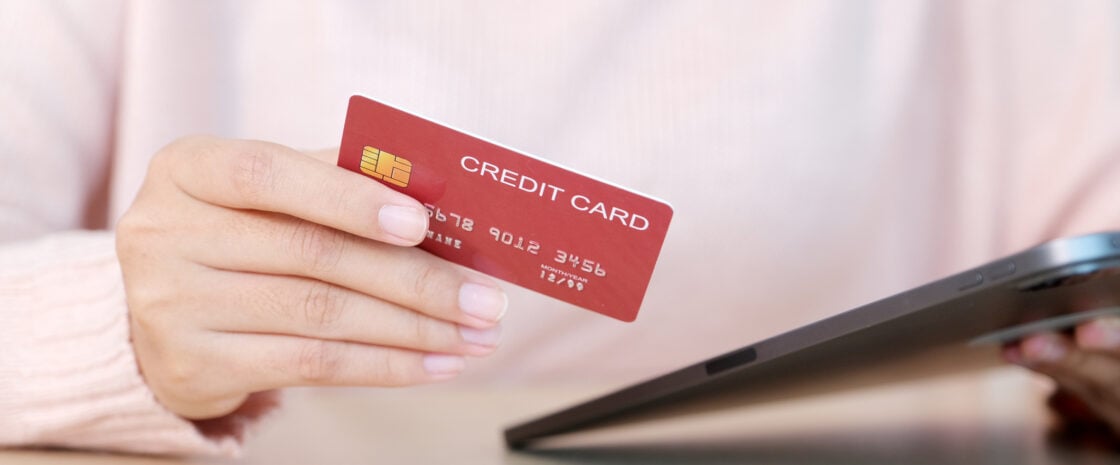Your credit card number is a lengthy string of digits on the front or back of the card that identifies it as a specific credit card.
While you probably know the last four digits of your own credit card’s number — because that’s what websites with your card details display to quickly confirm it’s the card you want to use — it’s worth understanding how the entire credit card number works.
How many numbers are on a credit card?
A credit card number has 15 to 16 digits, but this varies based on the credit card’s payment network. For example:
- American Express credit cards have 15 digits.
- Visa credit cards have 16 digits.
- Mastercard credit cards have 16 digits.
How to read your credit card number
Credit card numbers are intentionally long because they are compromised of distinct parts that protect both the cardholder and the credit card issuer.
To better understand how credit card numbers work, let’s look at the anatomy of a credit card:
Major industry identifier (the first digit)
The first number is the major industry identifier (MMI) and indicates the credit card payment network the card operates on.
- For American Express, this number is 3.
- For Visa, this number is 4.
- For Mastercard, this number is 5 or 2.
It’s important to note that a bank is separate from a payment network. For example, Westpac is distinct from Visa and Mastercard, which are both payment processors.
If there’s a problem with your card, you should speak with your bank directly, not the payment network. Most of the time, you won’t interact with the network, and all communication will occur directly with your bank.
» MORE: 9 Things to Know Before Getting Your First Credit Card
Bank identification number (the following five digits)
The next digits specify the bank identification number (BIN), also known as the individual issuer number (IIN), which identifies the financial institution that issued the card.
Coupled with the MMI, you can use these first five or six digits on a card to find out both the issuer and the network.
For example, compare the following beginning digits on different Visa credit cards:
- Some Citibank Visa credit cards begin with “414726.”
- Some Commonwealth Bank Of Australia Visa credit cards begin with “405221.”
- And some ANZ Visa credit cards begin with “407220.”
You’ll notice each begins with 4 — the MMI for Visa — but the following numbers in these six-digit codes differ because of the different issuers.
It’s worth noting that the BINs for many Australian banks may also vary slightly — typically, major issuers have multiple BINs associated with various credit and debit card products.
For example, the Commonwealth Bank Of Australia has dozens of BINs. To share a few:
- Visa credit cards may have: “405221”, “ 494052”, “494053”, “405221”, “494052” and “494053”, among others.
- Mastercards may have: “535316”, “ 535318”, “535319” and “555005”, among others.
Individual account number (the next numbers)
Next, you’ll see the individual account number, also called the personal account number, which identifies the specific account associated with the credit card.
This number begins at the seventh digit and ends on the second to last digit.
Unlike the subsequent numbers on the card, the pattern of these eight numbers varies considerably and is the most integral part of your credit card number.
Check code (the last digit)
The final digit is the check code, or the checksum, which validates the card number. That digit is determined using the Luhn algorithm and the previous numbers. This unique algorithm helps to ensure that you or a merchant entered the credit card number correctly.
Other credit card numbers and features
That long number is one of many crucial components of your card. Your card also typically features the following:
- Your full name.
- A signature strip.
- The bank’s contact details. Westpac, for example, lists two phone numbers (for inside Australia and overseas) and their website.
- The expiration date.
- The CVV (card verification value), also sometimes called the credit card security code, or CVC (card verification code).
You’ll also need to know your personal identification number (PIN) for many in-person transactions.
Credit card numbers vs account numbers
Your credit card number is not the same as your credit card account number, but the two are related, and your credit card statement will typically list your account number.
When your credit card expires, or if you have to replace it after it was lost, damaged or stolen, you’ll receive a new credit card with a fresh credit card number. However, your credit card’s account number will not change.
» MORE: What To Know When Activating A New Or Replacement Credit Card
Credit card numbers vs debit card numbers
Your credit card number is also distinct from your debit card number — though they may follow a similar sequence if they are from the same bank.
The long number on your debit card is not the same as your bank account number, but it does reference the bank account associated with the debit card, and transactions made on the card will come from that linked account.
In contrast, a credit card number does not reference a bank account — just the credit card account.
However, a debit and credit card may look almost identical if you line them up — especially if they are from the same bank. Still, while the layout, branding and bank contact details will be the same, the expiry date, the CVV and the card number will differ.
DIVE EVEN DEEPER

Types Of Credit Cards In Australia
Types of credit cards include rewards, low-interest, balance transfer and credit-building cards. When choosing a credit card, consider your spending habits and ability to repay the balance.

What to Know About Your Credit Card Limit
A credit limit is the maximum amount of money you can spend on your credit card.

What Is This Random Charge On My Credit Card?
It can mean credit card theft, but there are legitimate reasons for them to appear on your statement, too.


